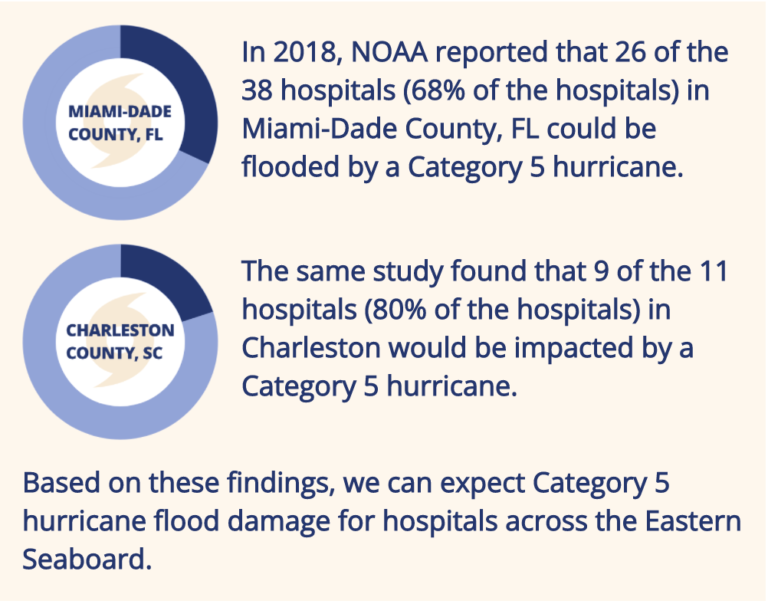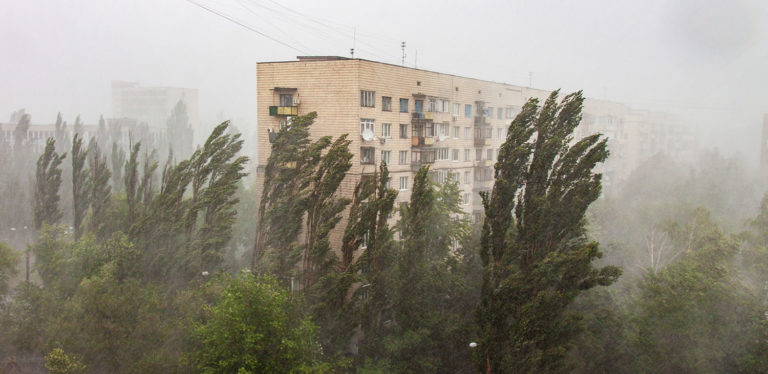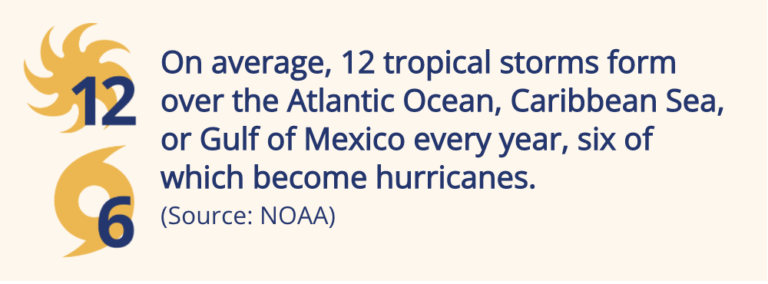
Healthcare & Extreme Weather
Healthcare facilities must be prepared to stay operational year round in order to provide vital care to their communities. With extreme weather becoming a more frequent part of life in the United States, healthcare facility directors and professionals are faced with an increasing amount of challenges to remain operational 24/7. In this newsletter, we’ll discuss the most common types of extreme weather that have the greatest impact on healthcare facilities.
Flooding & Water Damage
Hurricanes
According to the National Oceanic and Atmospheric Administration’s (NOAA’s) 2019 National Climate Assessment, the biggest threat to healthcare facilities during extreme storms like hurricanes is flood damage from storm surges. As sea levels rise, the flood zone is reaching further inland every year, putting more coastal area healthcare facilities at risk of experiencing severe flood damage. Facility flooding can also occur when storm damage to the roof or envelope of the building occurs, allowing rain to pour inside.

An academic paper published by the International Journal of Environmental Research and Public Health in March 2021 also found that hurricanes cause and exacerbate multiple diseases in the affected area, such as diseases linked to environmental hazards like mold or pollution, and existing conditions like cardiovascular disease, mental health concerns, and respiratory illnesses. The peak of these adverse health impacts are typically felt within 6 months of landfall, making it all the more important for healthcare facilities to remain operational during hurricane season.

Other Sources of Water Damage
Water damage can be present in a hospital from other extreme weather, like wildfires, due to water being used in fire suppression. Additionally, earthquakes can also damage infrastructure in a healthcare facility, causing burst pipes and subsequent flooding.
Category 3 – Blackwater
Flood water from earthquake damage or severe storms runs the risk of containing blackwater—water that contains sewage or significant levels of contamination. According to the Institute of Inspection Cleaning and Restoration Certification (IICRC), blackwater is classified as Category 3 water and requires swift and thorough professional intervention to properly address the contamination it causes and protect the health of the community. Given the nature of healthcare facilities and the vulnerable health of patients who may be staying in a hospital when a storm or earthquake strikes, mitigating blackwater flooding fast is especially crucial.
Having an emergency response agreement in place with an IICRC-certified restoration contractor is vital for healthcare facilities to ensure immediate decontamination, clean up and restoration takes place. As part of their disaster recovery plan, healthcare facilities should take any opportunity to reconstruct their facility to be more resistant to flooding and storm damages as well.
High Winds & Power Outages
High winds stem from several different kinds of extreme weather including hurricanes, tornadoes, severe thunderstorms, and tropical storms, and can be responsible for starting and spreading wildfires. High winds also contribute to power outages. According to the U.S. Department of Energy (DOE), weather-related power outages are the leading cause of loss of power in the country. The United States suffers more electric outages than any other developed nation, according to a report from Pew. Healthcare facilities, which rely on stable access to power to operate medical equipment, must be prepared to deal with damage or destruction to the power grid. Solutions such as on-site generators or solar panels must be resistant to the forces of nature that damaged the grid in the first place. Such resilience is key, as high winds have been known to damage or even blow away the housings for rooftop generators.
After the December 2021 tornado outbreak that ravaged the Midwest, hospitals in the impacted areas were relying on generator power to care for victims of the tornadoes, as well as those who were already requiring care prior to the storms. FEMA provided more than 60 generators to the affected area, and National Guard units from multiple states responded to help hospitals and emergency services providers to address the disaster.
High winds can compromise the envelope of a building, damaging the roof, windows, and/or walls. Damage can also come from strong winds carrying debris from the surrounding area, such as broken tree limbs.

Hurricane Ida: A Real-World Example of Extreme Weather’s Impact
The damage from Hurricane Ida especially highlighted the worst outcomes of severe weather on healthcare facilities: water damage, damage from high winds, and loss of power.

In August 2021, Hurricane Ida forced three Louisiana hospitals to evacuate, and another hospital had to have patients rescued by the U.S. Coast Guard, according to an article by the Washington Post. The hospitals all suffered water damage and structural damage from the storm, including one that lost its roof. Hospitals across the affected area struggled to maintain generator power in the aftermath of the storm, as the hospitals were not only burdened with patients suffering from the fourth wave of COVID-19, but also new patients injured by the storm or relocated from facilities that had to close.
Louisiana’s healthcare facilities were not as prepared as they could have been for Hurricane Ida damage and faced additional challenges with the increased burden on their back-up power supplies due to the pandemic. However, the preparations and reconstruction completed since Hurricane Katrina in 2005 did prevent Ida from being the same kind of deadly event.
Emergency Response Planning Is Your Best Defense
To ensure healthcare facilities and hospitals can mitigate any damage and restore operations quickly after an emergency weather event or other catastrophe, an emergency response agreement is a must. This agreement is made with a reputable and reliable disaster recovery company, and will outline the plan for responding to various catastrophes. An ERA helps healthcare facilities recover quickly to minimize interruption to patient care.

